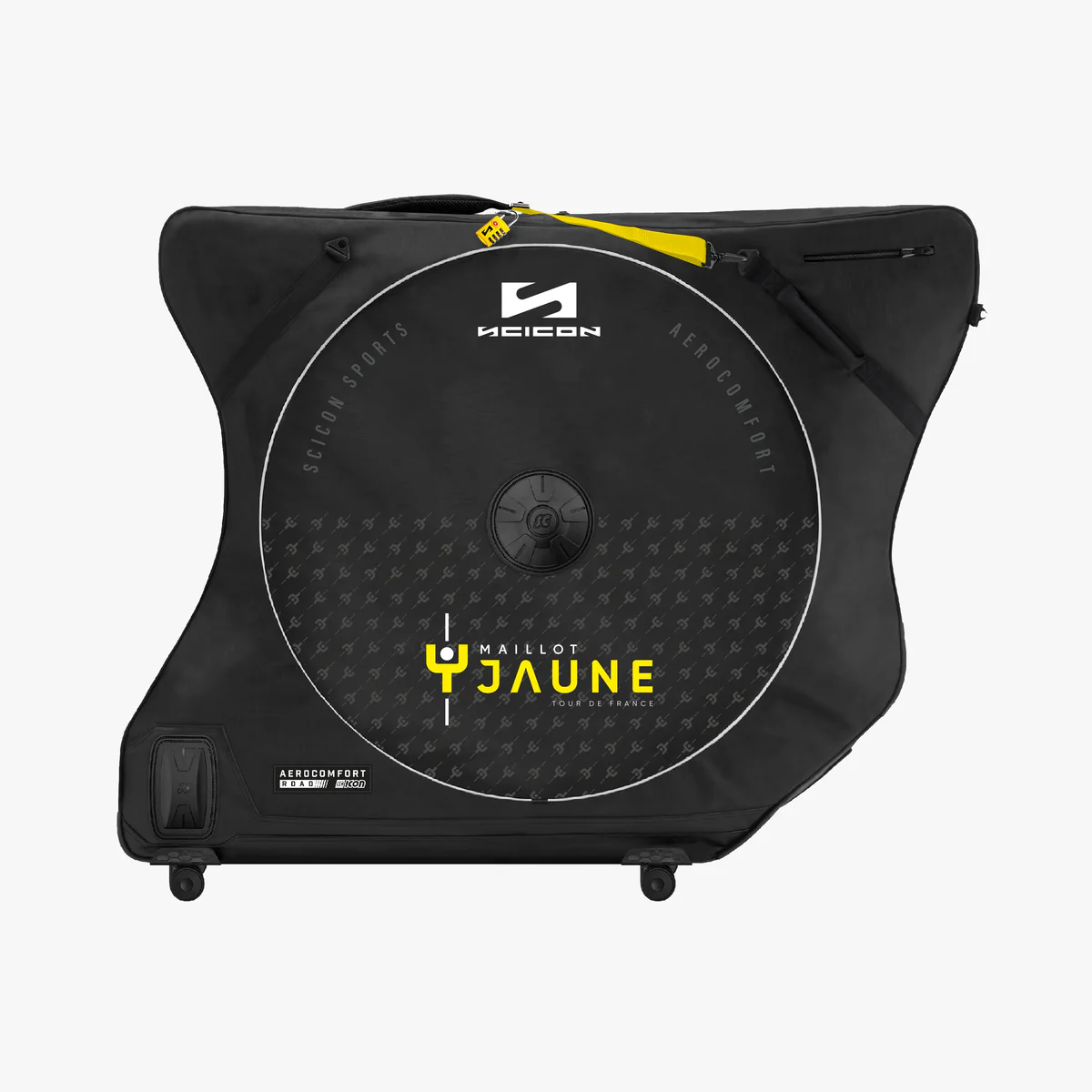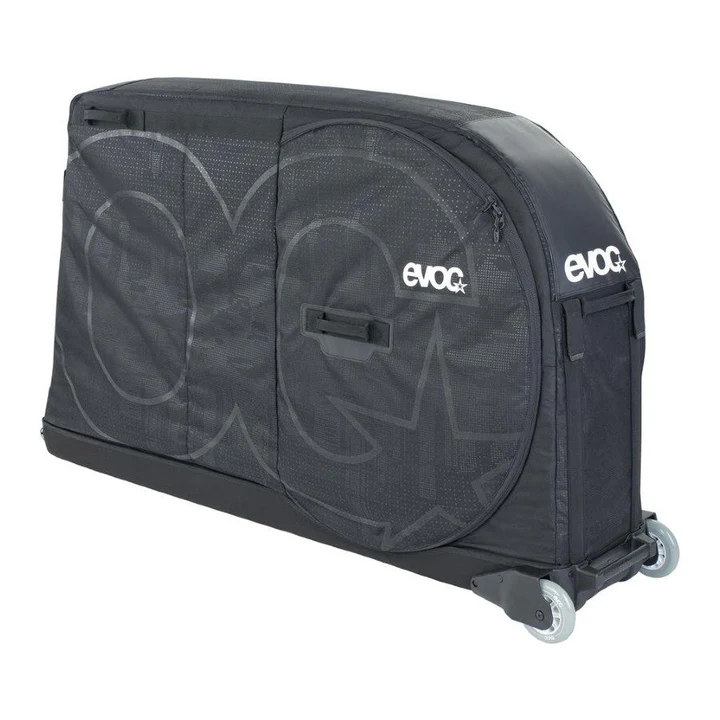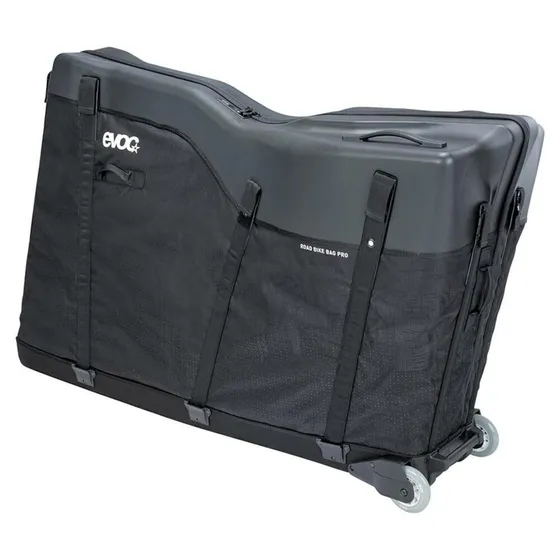Travelling with your bike like a pro!
- mariesoleilblais
- Mar 18
- 7 min read
Updated: Mar 18
In this article, I will cover:
Why travel with your bike rather than renting one
How it works at the airport
Choosing the right transport box
What goes where - CABIN Carry-On bag VS CHECKED bag
And finally, a few more tips for travelling like a pro!
Why travel with your bike rather than renting?
Economic
A few years ago, all North American airlines have abolished the bicycle surcharge. It now costs you the same for a checked bag as a bike box (as long as it meets a few rules such as a maximum size corresponding to a standard bike box and a maximum weight of 50 pounds.)
Always check the baggage policies before your flight. If you are confused, call the airline customer service directly.
Bike fit
In my opinion, the most important reason why you should choose to travel with your own bike is to preserve your current position. All bikes are different. Even if you measure yourself at home, it is sometimes difficult to reproduce the same position on a different bike.
The saddle may be uncomfortable, and the shifting may be different. Travelling with your own bike ensures you are comfortable on your bike from the first mile.
How the airport works
When you arrive at the airport, there are two main steps. Knowing how to identify them will help you be more relaxed.
Check-in
The first step is to go to the check-in counter to get our boarding passes and drop off our luggage. This step is done by the airline (often flight attendants). Their job is to enforce baggage policies regarding weight, dimensions and pricing.
Since there are no more bike fees in North America, it's best to mention that you have a bike. Usually, they will weigh it to make sure it's under 50 pounds. You CAN bring a bike over 50 pounds (max 70 lbs) - BUT, you will get a "Heavy Baggage" tag. This means that it must be handled by two employees at a time, which can cause delays in some cases. In addition, bags over 50 pounds may be subject to weight surcharge fees depending on the policy in effect.
Although it is not recommended (or permitted) to put clothes in the bike box, flight attendants are not mandated to open or check the contents of your baggage. They must only respect the weight and dimensions and charge the appropriate fees for the description provided.
Once your boarding pass has been received and the regular baggage has been dropped off and/or tagged, you will be directed to the OVERSIZED BAGGAGE counter to drop off your bike.
The security - OVERSIZE Luggages
This step consists of inspecting the contents of "oversized" luggage that does not fit in a regular scanner. They have to be checked by hand. (Some airports have giant scanners so you may skip this step, but this is not the case in Montreal)
Security agents work for the airport; they are at the service of all airlines. Their job is to ensure SECURITY (not policies): to check that nothing can explode or leak under pressure (like lithium batteries).
(They do not care if you respect the rules regarding weight or if you put clothes in your box.)
Security agents will ask you to open your box and take out all the items that can be scanned in the machine: you will have to remove all the bags and accessories that are not attached to the bike.
Pro tip: it is better to gather the accessories and clothes in a few easily accessible bags to facilitate the process.
Once the box is emptied of all belongings other than the bike, the agent will be able to scan the box by hand using his thingy. Then, you will have to put your belongings back in the box. They usually have tape and an exacto to wrap the box, but it is a good practice to have some with you.
They will take care of sending your inspected box to your airline. You can now head to the regular security gates (to scan the carry-on bag and yourself, etc.)
Psst. Airports are the most well-marked places in the world! Trust me, nothing is easier than finding your way through an airport.
Choice of your bike transport case
A to B Travel (cycle tourism, etc.)
When your starting point is different from your ending point, the easiest way is to use the good old cardboard box method! Throw it away at your destination, then find a new cardboard box at a store in your return city.
I've flown with a cardboard box many times, and it's very reliable. This is how bikes are transported when they're new.
Pro tip: If you're travelling in the winter or have a layover (if your box is likely to be exposed to the weather for a while), I recommend the tape method (transparent shipping tape works great) to waterproof the box, especially the bottom and 1-2 inches off the ground. I also like to add tape around the handles to prevent them from tearing along the way (especially if I plan on using it again on the way back!).
Round trip from the same location
If your starting and ending point is the same, then here are some things to consider when choosing a shipping box:
Will you need to use public transit? Or to rent a car? (box size)
Will you have space for a rigid box where you stay? (rigidity)
Will you need to walk with your box? (wheels)
Some larger boxes allow you to install the bike without detaching the handlebars or derailleur. This is convenient and quick, but you must plan for space. Shipping boxes are not cheap; they can vary from about CAD 500 to over CAD 1,300.
If you only travel occasionally, I recommend using a cardboard box. Alternatively, check out the rental options for a shipping box at a bike shop.
What goes where - CABIN Carry-On bag VS CHECKED bag
Carry-On Bag (in Cabin with you)
Cycling shoes and pedals - in case of a delay of the bike, you can borrow or rent a bike more easily
Helmet (keep with you - fragile!)
One pair of cycling shorts - in case of a delay, you are ready!
Sram batteries and electronic devices (Garmin) - all lithium batteries that can be removed must be in the cabin. (Not necessary for integrated batteries that cannot be removed with your hands - for example, Shimano)
Toiletries gel/liquid in travel format (<100 ml)
Medications
CABIN = ✅ Electronic and ✅ valuables
🚫 No bike tools
Checked Bag (suitcase and/or bike box)
Bike tools and others (knives, etc.)
Cycling clothes* and bulky clothes* (not always allowed to be put in the bike box but always accepted by security)
Integrated batteries (that cannot be removed by hand, e.g. Shimano) can be in your checked bag.
Gel/liquid items over 100 ml
IN THE HOLD = ✅ Everything EXCEPT 🚫 what can explode (aerosols, CO2 cartridges), and 🚫 lithium batteries that can be removed (Sram)
🚫NEVER bring CO2 cartridges.
(But if you forget it, the security will simply take it away. No consequences.)
Pro Tips - In Your Luggage:
Only bring the tools you need to rebuild the bike
Always carry your pedals, cycling shoes and a kit in case your bike is delayed - you can rent a bike for a day and still get to ride. (Your travel insurance should cover the cost or rental)
Don't bring a pump. Go to a local shop to pump up the wheels the first time (or use a mini pump)
Always keep your helmet with you in the cabin - very fragile!
If your luggage is heavy, save weight by buying amenities locally: sunscreen, toothpaste, etc.
Travel LIGHT!

A few more tips for travelling like a pro!
Be early!
Check-in early as soon as you receive the email 24 hours in advance (seat selection).
Arrive early at the airport to allow extra time for the manual inspection of your oversized bike box.
Board the plane early, as soon as your "boarding area" is announced (first come, first served for the baggage compartments).
In case of flight disruptions
It is rare, but it does happen, especially when the weather is bad (in winter). I have experienced almost all of the situations which taught me a few lessons!
Have the airline app on your phone (to check flight status and track your bags)
Have your airline's customer service phone number saved in your contacts to be rebooked first - call as soon as your flight is cancelled. IT WORKS!
If a flight is cancelled - go to the counter immediately. First come, first booked. If you are unsure of what is happening, go to the counter. (Call at the same time!)
Have an Airtag or a Scout by Knog tracker to locate your bike at all times on your phone.
If in doubt that you're bike had enough time to make it or when changing itinerary, REQUEST the flight attendant to verify that your bike is on board before takeoff (using your baggage number on the little sticker). All baggage on board is scanned and will be on the computer if it is on board. Sometimes, all it takes is 5 more minutes!
Hotel choice
Hotels near the airport usually include a shuttle service between the airport and the hotel. A much more economical and spacious option than a taxi!
At the hotel, book a room for people with reduced mobility - large and easy to access! At a motel, ask for a room on the ground floor.
Navigation without using data
Download an area on Google Map for free when you're on wifi.
Use RidewithGPS Premium at $7.99/month to navigate routes without using data on your phone.
Other tips
Use UBER in case of a mechanical during a ride (or similar app) - set up your account and payment method in advance
If UBER XL is available, choose it to transport your bike box
Find a bike shop to get a new bike box for free (have it repacked as an option)
Ask the hotel to keep your bike box in storage for a few days if you would like to go on an adventure without dragging your box (to travel light before/after the bike trip) - come back and pick it up before your flight and use the hotel shuttle to the airport
Have a good trip!
and most importantly, have faith in yourself!!!





Comments